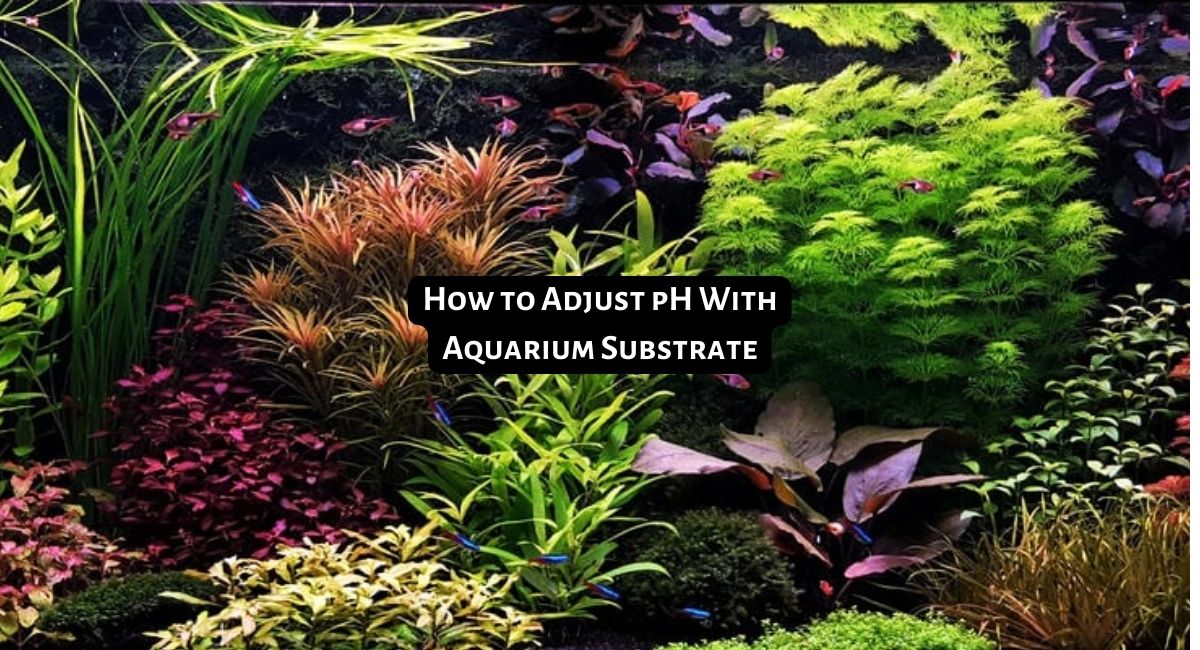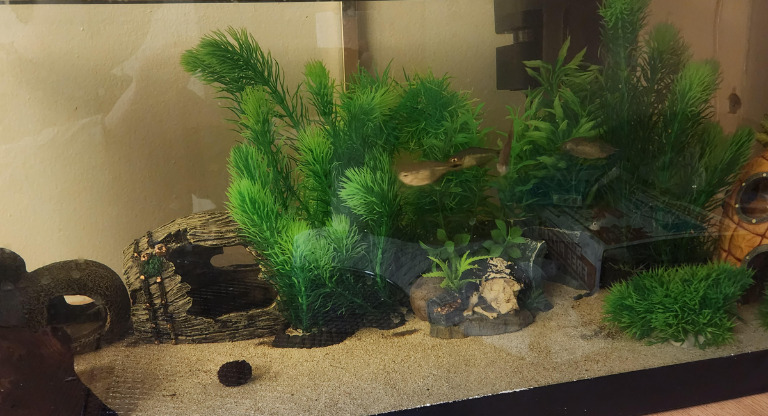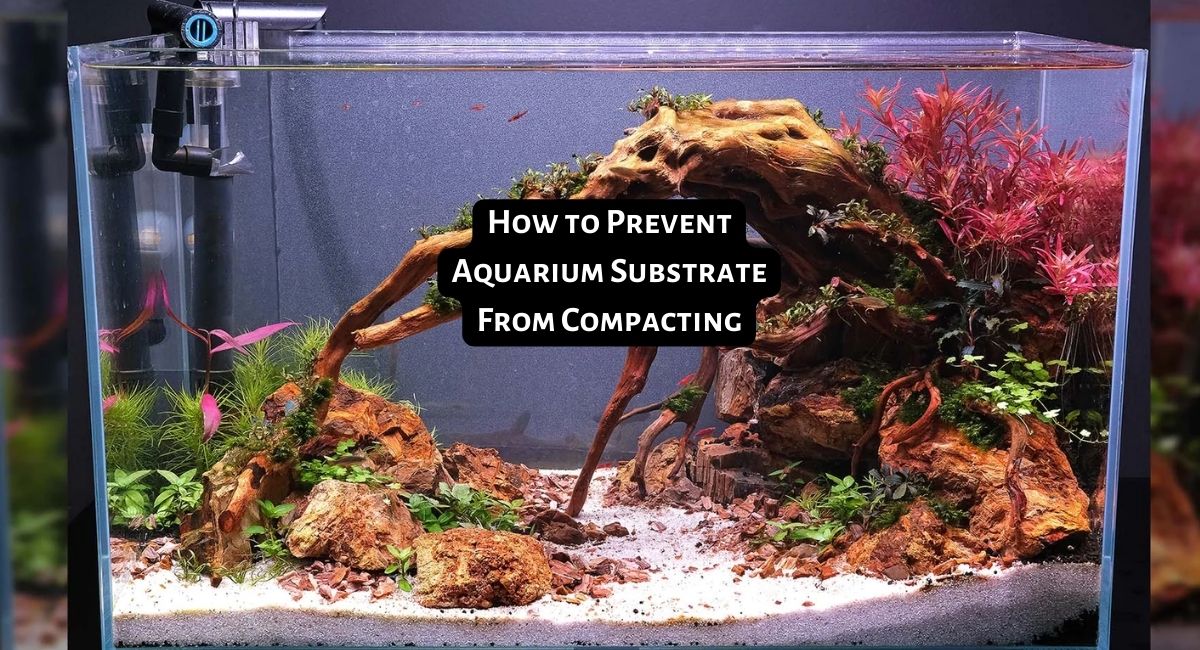Smartplantedaquarium.com participates in affiliate marketing programs. We may earn commissions on purchases made through our affiliate links. This doesn't affect our content or recommendations and we only recommend products we would put in our own tanks.
I’m often asked how best to adjust pH using aquarium substrate. It’s true that aquarium substrates can have a significant effect on the water chemistry of our tanks. In this blog post, I’ll explain why adjusting pH in an aquarium is important and how to adjust pH with aquarium substrate.
I’ll also go over some of the different types of substrates, their benefits and drawbacks, and which ones are most suitable for adjusting pH levels. Finally, I’ll list a few tips that can help you maintain a healthy equilibrium in your aquarium. With this information, you should be well on your way to achieving the perfect pH balance in your tank.
Let’s get started!
TL;DR
Adjusting pH with aquarium substrate is a great way to maintain healthy water conditions in planted aquariums. This technique can be used to both raise and lower pH levels, depending on the type of substrate you use. When adjusting your aquarium’s pH, it’s important to understand how much impact different substrates have on the water chemistry so that you don’t overCorrect or under correct. Gravel, peat moss, driftwood, and crushed coral are all types of substrates that will naturally elevate or reduce the acidity of your tank’s water. Additionally, adding baking soda to substrate can also work as an effective method for raising pH.
Contents
How to Adjust pH With Aquarium Substrate?
As an aquarist, I know that maintaining the right pH level in your aquarium is essential for its health and stability. pH refers to the measure of acidity or alkalinity in water, which affects various chemical processes inside the tank. The ideal pH for planted aquariums is generally around 6.5-7.5, although it can vary depending on the species of plants and fish you keep.
Adjusting the pH in an aquarium can be done in a few different ways, but using the substrate is one of the most popular and effective methods. By choosing the right kind of substrate, you can control and maintain the pH level within desired limits. In this blog, I’ll explain how to adjust aquarium pH with substrate in detail.
If you are adding nutrients to your aquarium, or don’t do it properly, your aquarium might suffer. Similarly, it is important to clean your aquarium as best as possible.
What Causes Low pH in an Aquarium?
presence of decaying organic matter in the substrate such as dead leaves or other plant material. Decomposition releases acidic compounds into the water, lowering its overall pH level. Overfeeding can also add more waste to the tank and lower pH levels. Another cause of low pH can be from the aquarium’s use of certain decorations or rocks that contain carbonates and bicarbonates, which dissolve over time, releasing acidity into the water.
Another major contributor to a low pH in an aquarium is the presence of fish species that prefer acidic water conditions. These fish will produce waste containing acidic compounds that can affect the tank’s pH levels. Finally, water evaporation in the aquarium over time can cause a notable decrease in the amount of minerals present in the water, resulting in lower pH levels.
In order to adjust and maintain optimal pH conditions for your fish, it is important to understand what causes low pH and how to adjust it with the right aquarium substrate. Fortunately, there are different types of substrates available that can help raise pH levels in an aquarium.
How to Raise pH?
Raising your aquarium’s pH level is usually necessary when the water has become too acidic. The best way to adjust the pH is by using a substrate made of coral, aragonite or limestone. These materials are alkaline and will help increase the pH as they dissolve over time. You’ll need to change out part of your existing aquarium substrate with one of these materials to increase the pH, but it’s important to be careful not to make drastic changes.
Adding too much of an alkaline material can cause your aquarium’s pH level to become too high and create a stressful environment for fish.
To raise the pH, begin by adding small amounts of the alkaline substrate material. Start by adding 10% of the material and measure the pH levels before increasing further. The best way to measure your aquarium’s pH is with a test kit designed specifically for this purpose. Monitor the aquarium’s water parameters regularly to ensure that your changes are having the desired effect without causing any harm.
As you add more of the alkaline material and the levels begin to rise, you can start adding other methods of increasing pH. Adding crushed coral to your aquarium filter will help create a buffer which further increases pH levels without having to add too much substrate material. A bubbler or air stone is another great tool for regulating the pH; it helps aerate the water which in turn reduces its acidity.
Finally, adding a reverse osmosis filter can help reduce the amount of acidic compounds in your aquarium’s water, thereby increasing its pH levels. This is an especially effective method for freshwater tanks with high levels of dissolved solids. Reverse osmosis filters can be expensive to maintain over time, so it should only be used as a last resort.
What Causes High pH in an Aquarium?
The pH level of an aquarium can be affected by many factors, most commonly the type and composition of the substrate used. Aquarium substrates that contain a high percentage of limestone can raise the pH levels in the water. In addition, organic debris like fish waste, decaying matter, and uneaten food can decompose in your tank and cause an increase in the pH levels.
Another common factor that can cause high pH in your aquarium is overfeeding. When too much food enters the tank, it can create an imbalance of nitrogen compounds and cause a surge in pH levels. Lastly, some fish species naturally produce higher amounts of ammonia than others, which contributes to increasing the pH level in the aquarium.
How to Lower pH?
All of these factors can cause your aquarium pH to become too high, leading to various health and environmental concerns for your fish. To counter balance this effect, you can adjust the pH with aquarium substrate. Here are some tips on how to do it:
Tip 1: Test the pH levels and mineral content of the substrate before placing it in your tank. By doing this, you can ensure that the substrate won’t raise pH levels once it is submerged in water.
Tip 2: Use substrates with neutral or slightly acidic substances like silica sand and gravel. These types of substrates will help buffer the pH levels in your aquarium by slowly releasing minerals into the water.
Tip 3: Monitor your pH levels regularly and adjust accordingly. If needed, replace a portion of the substrate or add more neutralizing materials like driftwood or marine salt to reduce acidity.
What is the Ideal pH Level in an Aquarium?
The ideal pH level for an aquarium is between 6.5 to 8.0, with the natural optimal range being around 7.0. This pH level should be maintained as closely as possible in order to create a healthy environment for your fish and other aquatic life forms; any variation from this range can lead to illness and even death of your precious pets.
Therefore, if you find that your aquarium’s water has a pH level outside of the specified range then it is essential to take action quickly in order to bring it back into balance. The most effective way to do this is by using aquarium substrate, which can act as a buffer that works to maintain more consistent levels over time.
In addition to helping maintain a healthy pH level, aquarium substrate can also be beneficial in other ways. It can help create a natural environment for your fish and other aquatic life forms by providing essential minerals and nutrients that are absorbed into the water column. Substrate also acts as an effective biological filter, trapping organic matter and debris which helps to keep your tank clean and clear.
By using aquarium substrate to adjust pH levels, you will be able to provide a safe and comfortable home for your beloved fishy friends! Keep reading if you would like to learn more about how to do this effectively.
Why is pH Important in an Aquarium?
The pH of aquarium water is important as it affects the health and well-being of fish, invertebrates, and plants living in the tank. A balanced pH level can prevent diseases, encourage healthy growth and reproduction, and extend the lifespan of aquatic species. The ideal range for most tanks is 6.5 to 8.2, with some species such as certain cichlids preferring higher or lower readings depending on their natural habitat.
Having an understanding of how to adjust pH levels with aquarium substrate is key to achieving a balanced environment within your tank. There are several ways that this can be done including using chemical additives and natural substrates that are capable of altering the acidity levels in your aquarium water.
What Influences the pH in an Aquarium?
The pH of an aquarium is affected by a variety of factors, including the type and number of fish in the tank, as well as what type of substrate you use. In freshwater tanks, certain types of fish naturally produce more acid into the water which can lower the pH over time. The kind of substrate used also affects the pH in different ways. For example, some substrates are alkaline while others are acidic and will influence how much acid or base is in your aquarium environment.
In addition to these natural sources, humans can also influence the pH level through daily activities such as adding food to the tank or cleaning it out regularly. Depending on what type of cleaner products you use, this can affect your tank’s pH levels if it is not neutral. Therefore, it’s important to understand how your aquarium’s environment may be affected in order to adjust the pH levels as needed.
Full Steps and Methods to Adjust pH in an Aquarium
- Test the aquarium’s pH level using a test kit designed for freshwater aquariums. The ideal pH range for most fish is between 6.8 and 7.4, and it should not vary more than 0.3 points over time.
- Replenish minerals in your tank with limestone or coral gravel, which will raise the pH levels in tank water. Limestone can be purchased at many pet stores or online retailers like Amazon; buy one pound of limestone for every 10 gallons of water to adequately buffer your tank’s acidity/alkalinity level (pH).
- Add a few pieces of peat moss to the substrate if you want to lower the pH level of your tank water. Peat moss breaks down slowly, releasing tannins and humic acids into the water that lower the pH level.
- Check your tank’s pH levels regularly with a test kit to make sure they stay within the optimal range of 6.8-7.4; if not, adjust as needed with either limestone or peat moss.
- Clean any aquarium decorations you have in the tank at least once a month to prevent acidic buildup from being released into the water and affecting its pH level. Use an aquarium brush and warm water to scrub off any residue or algae build up on rocks, plants, or other decorations before rinsing them off in dechlorinated tap water (if possible).
- Maintain good water quality with regular water changes; dirty water can increase the acidity of your tank’s pH level, so make sure to clean out 25-50% of your aquarium’s water every two weeks or so.
- Consider using an automated system to help maintain the right pH levels and achieve a more consistent environment for your fish. Automated systems use probes to measure and monitor the pH levels in your tank, then inject small doses of calcium carbonate into the water as needed to keep it at the optimal range. These systems can be expensive though, so do some research before investing in one.
Conclusion
Adjusting the pH of an aquarium is a delicate balancing act, but one that can be achieved with careful monitoring and strategic substrate selection. When done properly, it can create a healthier environment for fish and aquatic plants alike. By using the substrate to its fullest potential, you can adjust your pH levels without having to rely on other chemical treatments. With some patience and knowledge about planted aquariums, you’ll have no trouble keeping your tank’s pH in check.
In conclusion, adjusting pH with aquarium substrates is a great way to maintain healthy water conditions for your fish and plants. It requires close attention and the right type of substrate, but if you take the time to observe the process carefully, it can make a huge difference in your aquarium’s environment. Don’t be afraid to experiment with different substrates, and don’t hesitate to consult with a professional if you need help. With the right knowledge and care for your tank, you can get it to just the right pH balance for your fish and plants to thrive!
Frequently Asked Questions (FAQs)
1. How do you lower the pH in a substrate aquarium?
To lower the pH in a substrate aquarium, you can add natural materials like peat moss, driftwood, or decaying leaves that are known to decrease pH. You can also purchase acidifying chemicals like sodium bisulfate from local pet stores to further lower the pH. Be sure to follow the instructions on the packaging and test your water regularly after adding any chemical agents. It is also important to monitor your aquarium for any changes in water parameters before adjusting the pH so as not to cause long-term damage to your fish and other aquatic life. If necessary, use a supplemental air pump with an airstone to help increase oxygen levels when lowering the pH of your tank.
2. What pH should aquarium substrate be?
The ideal pH for aquarium substrate should be between 6.5 and 7.2, depending on the type of fish inhabiting the tank. Substrates with a higher pH (between 8 and 9) are better suited to African Cichlids, while substrates with a lower pH (between 5 and 6) are suitable for freshwater acidic fish such as some tetras, livebearers, or dwarf shrimp. It is important to match the correct substrate with the specific needs of the fish that will inhabit it in order to ensure their long-term health and happiness. Additionally, adding crushed coral or aragonite can also help maintain an alkaline environment in tanks with high levels of carbon dioxide or acidic water sources.
3. Does substrate increase pH?
Yes, substrate can increase pH in an aquarium. Substrate materials like crushed coral and dolomite are often used to adjust the water’s pH level by releasing calcium and magnesium ions into the water. These cations raise the water’s alkalinity and can therefore raise the pH. However, users should be mindful of how much substrate they place in their aquariums as too much can cause an excessively high pH that could be harmful for the fish inhabiting it. Additionally, not all types of substrates have an effect on aquarium water- some are neutral and won’t alter the pH at all. It is important to research which material is best suited for a particular type of aquarium set up before making a purchase.






